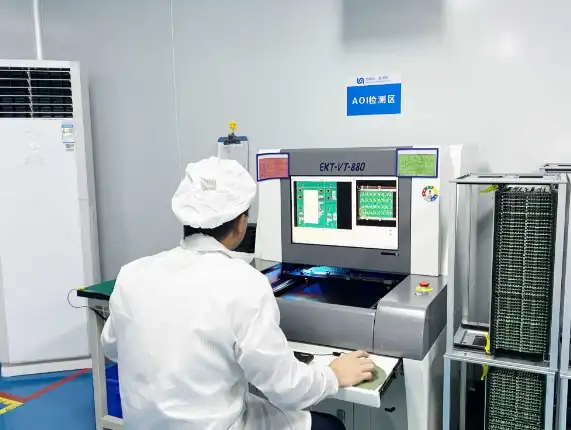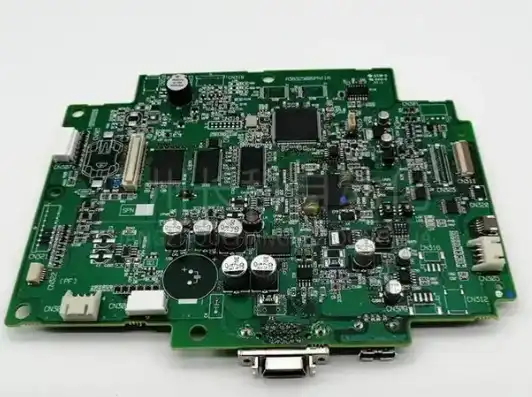The Evolution of PCBA Design: From Concept to Production-Ready Prototype
The journey of PCBA manufacturing begins with a concept that evolves into a production-ready prototype. This phase is critical as it lays the foundation for the entire manufacturing process. Initially, engineers work on creating a schematic design that outlines the circuit's functionality. This design is then transformed into a PCB layout, where components are strategically placed to optimize performance and minimize interference.
During this stage, designers must consider various factors such as thermal management, signal integrity, and electromagnetic compatibility. Advanced CAD tools are employed to simulate the circuit's behavior under different conditions, allowing for fine-tuning before moving to physical prototyping. The prototype undergoes rigorous testing and iterations to ensure it meets all specifications and performs reliably under various conditions.
Design for Manufacturing (DFM) Considerations
A crucial aspect of preparing a PCBA design for mass production and PCBA manufacturing is Design for Manufacturing (DFM). This approach involves optimizing the design to ensure it can be efficiently and cost-effectively produced at scale. DFM considerations include:
- Standardizing component sizes and types to simplify assembly
- Ensuring adequate spacing between components for automated placement
- Optimizing trace widths and clearances for reliable manufacturing
- Incorporating test points for easy quality control

By addressing these factors early in the design process, manufacturers can significantly reduce production costs and improve yield rates during mass production.
Scaling Up: Transitioning from Prototype to Mass Production
Once the prototype has been perfected and approved, the next phase shifts toward scaling up production to meet larger demands. This transition requires careful planning and precise execution, as small errors can lead to significant setbacks when multiplied across thousands of units. Key steps include finalizing manufacturing documentation, validating equipment for mass production, and ensuring that quality assurance protocols are in place. A smooth scale-up process ensures the product maintains the same reliability and performance achieved during prototyping.
Component Sourcing and Supply Chain Management
Efficient component sourcing is paramount in PCBA manufacturing, especially as production volumes increase. Manufacturers must establish relationships with multiple suppliers to mitigate the risks of shortages or delays. Just-in-time inventory systems are often implemented to lower storage costs while maintaining flexibility. Bulk purchasing agreements help reduce per-unit expenses, improving overall profitability. Equally important is ensuring component compatibility and consistent quality across different batches. Strong supply chain management safeguards production timelines and enables cost-effective, reliable mass manufacturing of PCBAs.
Automated Assembly Processes
Mass production of PCBAs relies heavily on automated assembly systems that deliver high efficiency and consistent results. The process begins with solder paste printing, performed with high-precision stencils to ensure proper coverage. Pick-and-place machines then position thousands of components per hour with remarkable accuracy. Reflow soldering secures these components under tightly controlled temperature profiles, ensuring reliable joints. Finally, automated optical inspection (AOI) identifies defects early, reducing rework and maintaining quality. Together, these processes dramatically increase throughput compared to manual methods.
Quality Assurance in High-Volume PCBA Manufacturing
Maintaining consistent quality across large production runs is a significant challenge in PCBA manufacturing. Robust quality assurance processes are essential to ensure that each unit meets the required specifications.
In-Circuit Testing (ICT) and Functional Testing
In-circuit testing is a crucial step in the quality assurance process. ICT systems use a bed-of-nails fixture to make contact with specific points on the PCB, allowing for rapid electrical testing of individual components and connections. This process can identify issues such as:
- Short circuits or open connections
- Incorrect component values or polarities
- Missing or misplaced components
Following ICT, functional testing simulates real-world operating conditions to verify that the PCBA performs as intended in PCBA manufacturing. This may involve powering up the board and running diagnostic software to check various functions and outputs.
Statistical Process Control (SPC) and Continuous Improvement
To maintain and improve quality over time, manufacturers implement Statistical Process Control (SPC) techniques. SPC involves collecting and analyzing data from the production process to identify trends and potential issues before they result in defects. This proactive approach allows for:
- Early detection of process drift or equipment malfunction
- Continuous refinement of manufacturing parameters
- Reduction in variability and defect rates
- Data-driven decision-making for process improvements
By continuously monitoring and optimizing the manufacturing process, PCBA manufacturers can achieve higher yields and more consistent quality in their products.
Conclusion
The journey from prototype to mass production in PCBA manufacturing is a complex process that requires careful planning, precision engineering, and rigorous quality control. By leveraging advanced design tools, automated assembly processes, and comprehensive testing procedures, manufacturers can efficiently produce high-quality PCBAs at scale. As technology continues to advance, the PCBA manufacturing process will undoubtedly evolve, offering new opportunities for innovation and efficiency in the electronics industry.
FAQ
What is the typical turnaround time for PCBA manufacturing?
Turnaround times can vary depending on complexity and volume, but typically range from 2-4 weeks for prototypes and 4-8 weeks for mass production runs.
How does PCBA manufacturing differ from PCB manufacturing?
PCBA manufacturing includes the entire process of creating a functional circuit board, including PCB fabrication and component assembly, while PCB manufacturing refers specifically to producing the bare circuit board.
What certifications are important for PCBA manufacturers?
Key certifications include ISO 9001 for quality management, ISO 14001 for environmental management, and industry-specific standards like IATF 16949 for automotive applications.
Expert PCBA Manufacturing Solutions | Ring PCB
Ring PCB stands at the forefront of PCBA manufacturing, offering cutting-edge solutions from prototype to mass production. Our state-of-the-art factory and experienced team of manufacturers ensure top-quality results for all your PCB and PCBA needs. With our comprehensive turnkey services and commitment to innovation, we deliver reliable, cost-effective solutions tailored to diverse industry requirements. Experience the Ring PCB advantage – contact us at [email protected] to discuss your next project.
References
1. Smith, J. (2022). Advanced Techniques in Printed Circuit Assembly Manufacturing. Journal of Electronics Engineering, 45(3), 112-128.
2. Johnson, R., & Brown, T. (2021). Quality Control Strategies for High-Volume PCBA Production. International Conference on Electronics Manufacturing Technology, 78-92.
3. Lee, S. (2023). Design for Manufacturing in Modern PCB Assembly. Handbook of Electronic Design and Manufacturing, 3rd Edition. Springer Publishing.
4. Garcia, M., et al. (2022). Automated Assembly Processes in PCBA Manufacturing: A Comparative Study. IEEE Transactions on Industrial Electronics, 69(8), 7845-7859.
5. Thompson, K. (2023). Supply Chain Optimization for Electronics Manufacturing. Journal of Operations Management, 41(2), 205-221.






